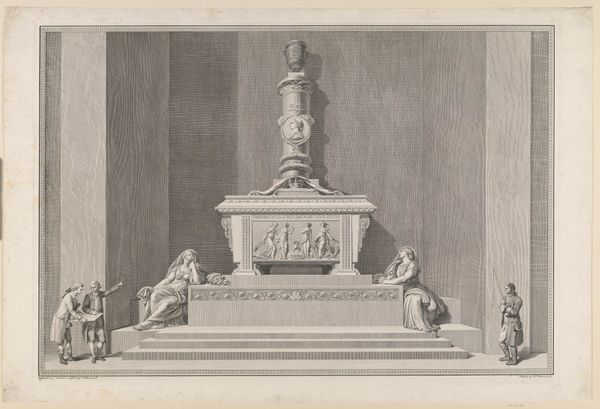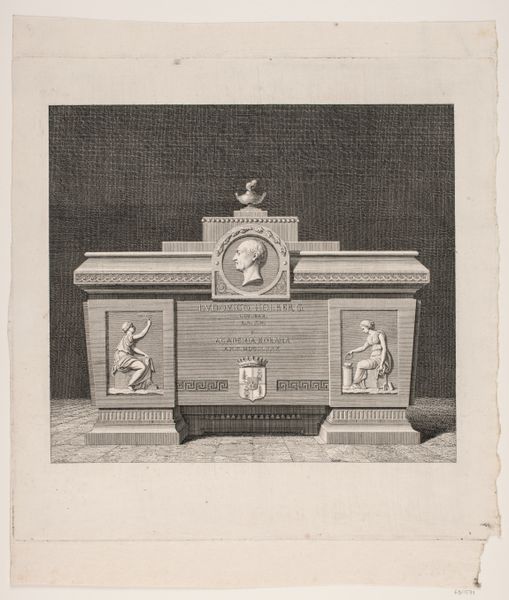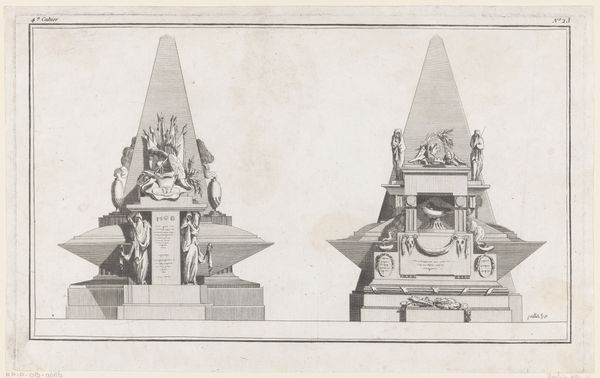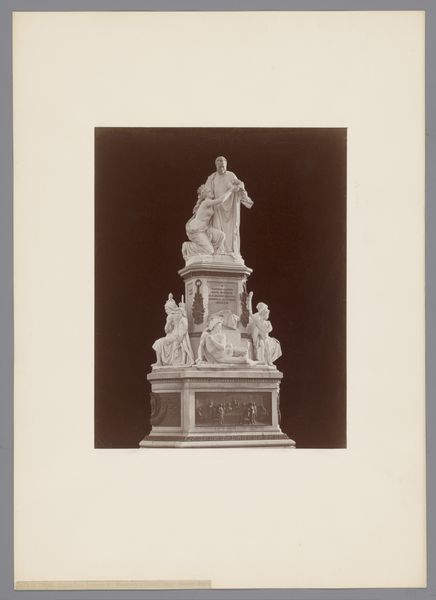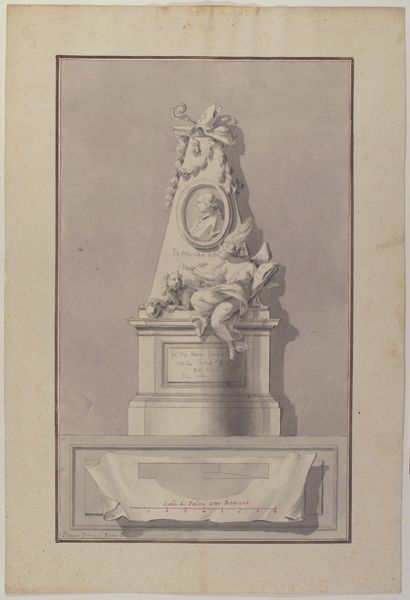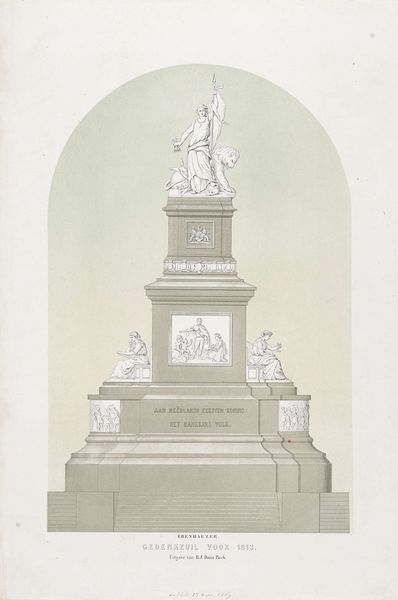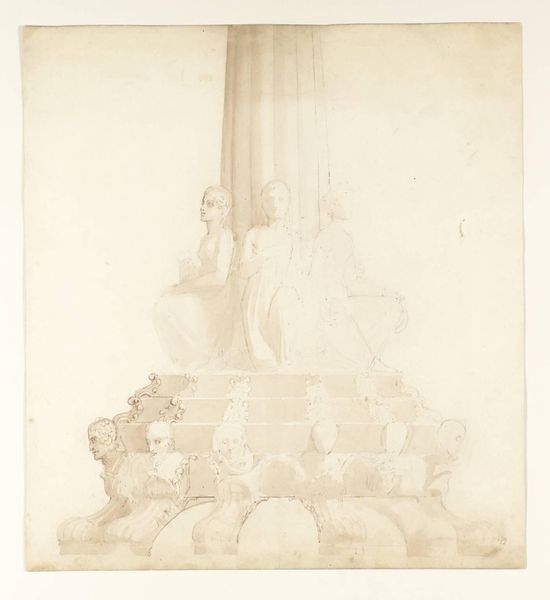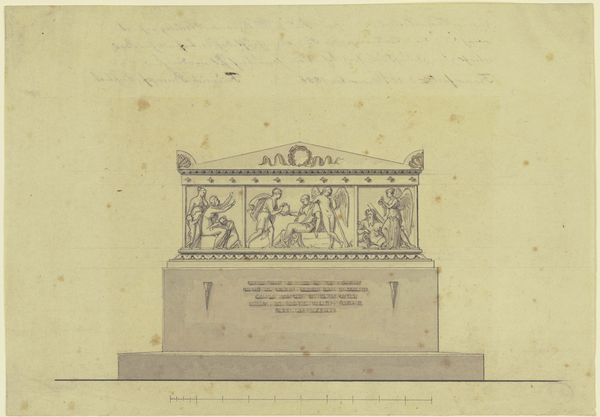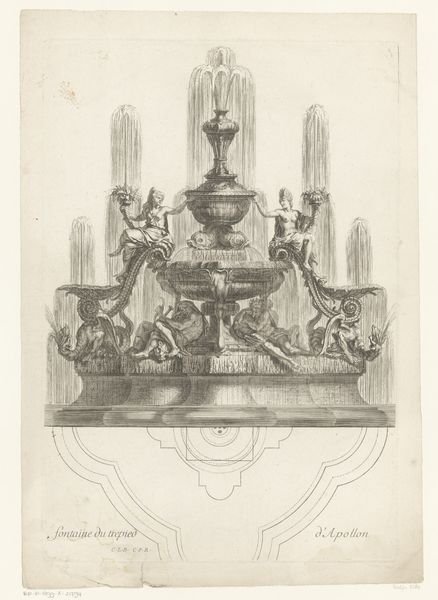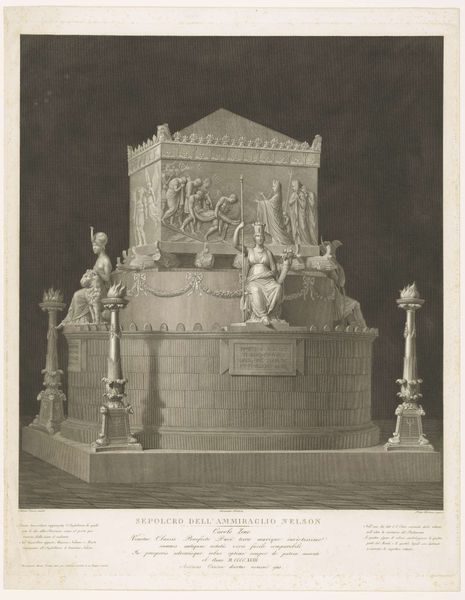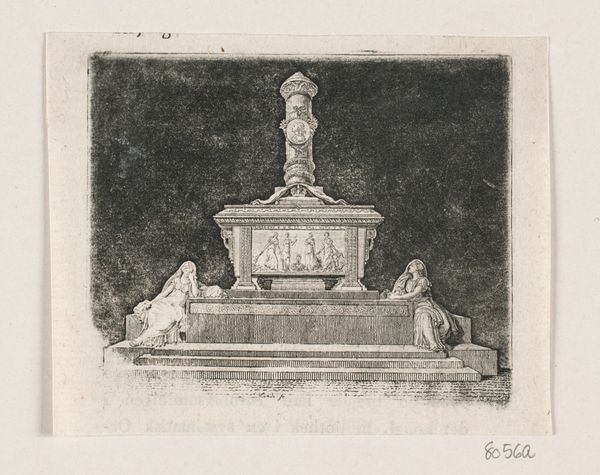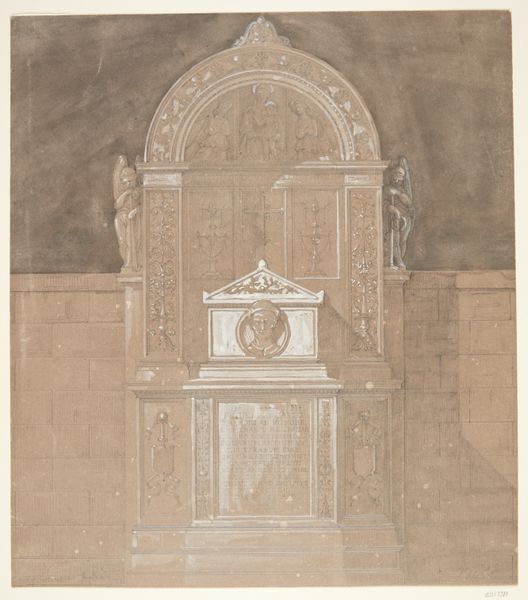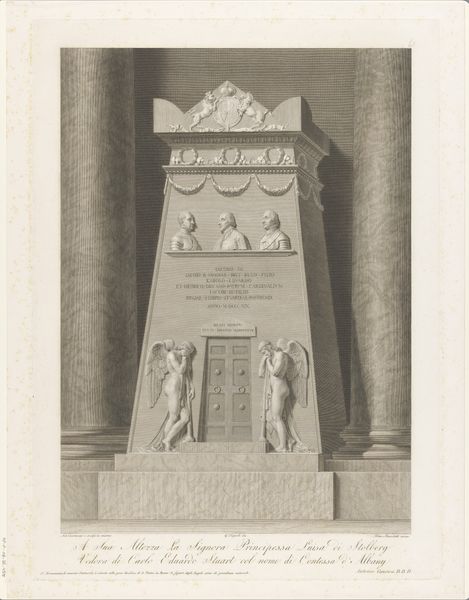
drawing, print, engraving, architecture
#
drawing
#
neoclacissism
# print
#
landscape
#
charcoal drawing
#
traditional architecture
#
history-painting
#
engraving
#
architecture
Dimensions: 546 mm (height) x 778 mm (width) (plademaal)
Editor: So, this is "Frederik V's gravmonument i Roskilde Domkirke" made in 1783 by J.F. Clemens. It’s an engraving, quite architectural and symmetrical. It almost feels like stage design to me, rather austere and very…planned. How do you interpret this work? Curator: The staging is key. This print captures the transition in the late 18th century toward Neoclassicism and the idealization of civic virtue, observable through shifts in patronage and the art market. Think about the social functions this monument served within the Roskilde Cathedral. It's not just a memorial; it's a political statement, a way for the monarchy to craft a particular narrative. How do the visual elements of the monument reflect ideas of royal power? Editor: Well, the clean lines and symmetry definitely give a sense of order and authority. But those figures on either side of the tomb look like mourners. Is there an intentional contrast, then? Curator: Precisely! This deliberate contrast would indicate both a ruler’s sorrow but also the eternal stoic character needed in their role, very deliberately put on display for those who frequented the Cathedral. It suggests not just the personal loss of the royal family but the loss felt by the nation, cleverly blending public duty with private grief. What do you think about the use of engraving as a medium to present this monument? Editor: Hmm, it feels like a way to disseminate an image widely. Perhaps it solidifies that image of power, allowing it to transcend the physical space of the Cathedral. I guess it speaks to your point about politics shaping art and public imagery. Curator: Exactly. The print format democratizes access, circulating a visual language of power beyond the confines of the cathedral, further embedding its ideologies. It really encapsulates the political aims embedded within supposedly ‘neutral’ artistic choices, don’t you agree? Editor: It really does, and seeing the engraving outside of simply aesthetic terms definitely shifts my perspective! Curator: Indeed!
Comments
No comments
Be the first to comment and join the conversation on the ultimate creative platform.
